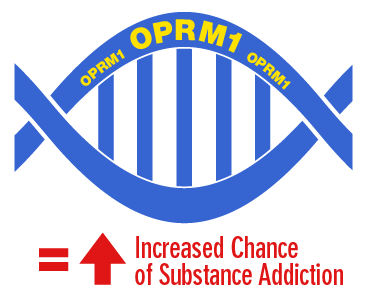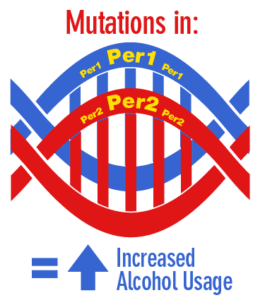The Role of Genetics and Increased Susceptibility to Addiction
In 2013, Indio Downey, the son of actor Robert Downey, Jr. was charged with felony cocaine possession. Shortly after his son’s arrest, Downey released a statement to a celebrity news website, TMZ: “Unfortunately there’s a genetic component to addiction and Indio has likely inherited it.”[1] Scientists are actively researching the role that genes play in the disease of addiction, as well as how addiction may be inherited.
The Possible Link to Inherited Genes and Addiction
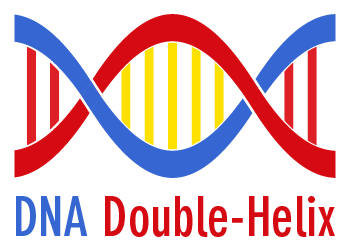
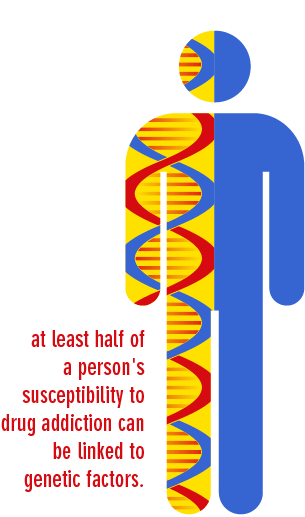
In their search for the biological differences that make people more susceptible to addiction, scientists have identified some genes that may play a role. These include the opioid receptor mu subunit 1 (OPRM1), 5-hydroxytryptamine receptor 1B (HTR1B), Period1 (Per1), Period2 (Per2) and the Neuropeptide Y (NPY) genes.
OPRM1
OPRM1 encodes for the mu opioid receptor (MOR) protein. MOR, in turn, plays an important role in substance dependence because it controls the dopamine system.[5] In studies, patients with the OPRM1 gene have shown “clinically observable changes in stress responsivity, vulnerability to opiate addiction and alcoholism.”[6]
HTR1B
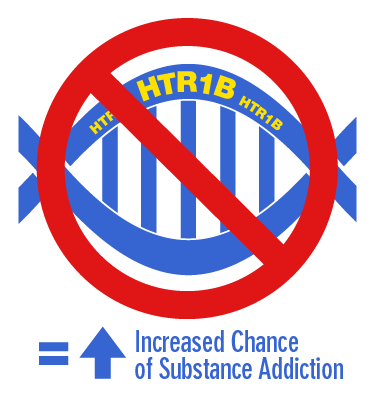
Per1 and Per2
Per1 and Per2 genes aid in regulating circadian rhythms. The National Institute of General Medical Sciences defines circadian rhythms as, “physical, mental and behavioral changes that follow a roughly 24-hour cycle, responding primarily to light and darkness in an organism’s environment.”[10] Mutations in the Per1 and Per2 genes result in the disturbance of these cycles. These disruptions have been found to increase alcohol intake,[11]which in turn contributes to alcohol abuse and relapse.[12]
Neuropeptide Y
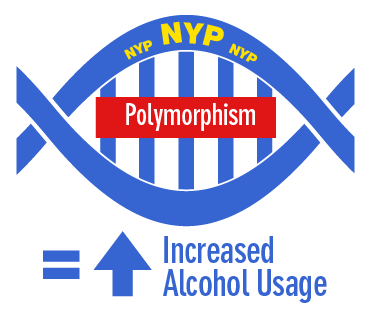
How are Genes Passed Down?
Heredity is the transmission of genetic information from one generation to the next. Each human being inherits or acquires twenty-three chromosomes from his/her mother and the same number from his/her father to make a total of twenty-three chromosome pairs. This is how traits are passed from parent to offspring. If one or both parents have a gene that predisposes them to addiction, the chances are their children will also have the same gene.
Inheriting Addictions
One year after the arrest of his son, Robert Downey Jr. told Vanity Fair that Indio “probably inherited his addictions.” When Downey was six, his father, Robert Downey Sr. allegedly started supplying him with marijuana. This was the beginning of Downey’s long history of substance use, which includes his arrests for possession of heroin, cocaine, and Valium, as well as time, served in prison for missing court-ordered drug testing. [14]
When Downey was six, his father, Robert Downey Sr. allegedly started supplying him with marijuana.
The Collaborative Study on the Genetics of Alcoholism assessed the genetic transmission of habitual smoking as well as alcohol, marijuana and cocaine dependence in families. The results confirm that the vulnerability toward addiction is an inherited trait. Researchers found that children of addicts were eight times more likely to develop an addiction themselves.[15]
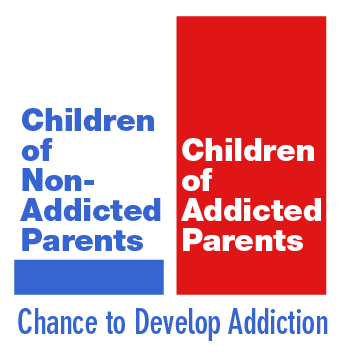
Behavioral neuroscientist Karen Ersche of the University of Cambridge in the United Kingdom and her associates conducted research to determine if inherited genetics was the sole cause of substance abuse. Fifty pairs of biological siblings, one with an addiction and one without, were evaluated for poor self-control, a symptom synonymous with the brain circuitry of addiction. Not surprisingly, both sets of siblings were found to have the same low amount of self-control. Researchers concluded that although some individuals are biologically predisposed to addiction, the disease is not inevitable and can be overcome.[17]
The Significance of Genes in Addiction Treatment
When a gene is discovered to influence substance abuse and addiction, scientists are then able to turn their attention to developing a drug that modifies that gene’s activity. Dr. Joni Rutter, director of the Division of Basic Neuroscience and Behavioral Research at the National Institute on Drug Abuse (NIDA), explained that these “studies, by pinpointing which genes drugs activate or silence, can shed light on the specific proteins and processes involved in addiction. And, if we can then prevent or reverse those effects, we may have powerful tools for preventing and treating addiction.”[18]
Overcoming the Disease of Addiction at Seaside Palm Beach
Seaside’s treatment programs address the patient’s emotional, physical and mental health.
Our mission at Seaside Palm Beach is to provide our patients suffering from substance abuse disorders with the finest care in elegant and peaceful surroundings. With customized therapies that incorporate the latest, clinically-proven techniques, Seaside’s treatment programs address the entire patient’s emotional, physical and mental health.
From medically-assisted detox to post-treatment support, Seaside enables patients to overcome their addictions by helping them to integrate wellness into their everyday lives. When you or a loved one is ready to start the journey to overcoming the disease of addiction, please contact a specially-trained counselor at Seaside Palm Beach.


